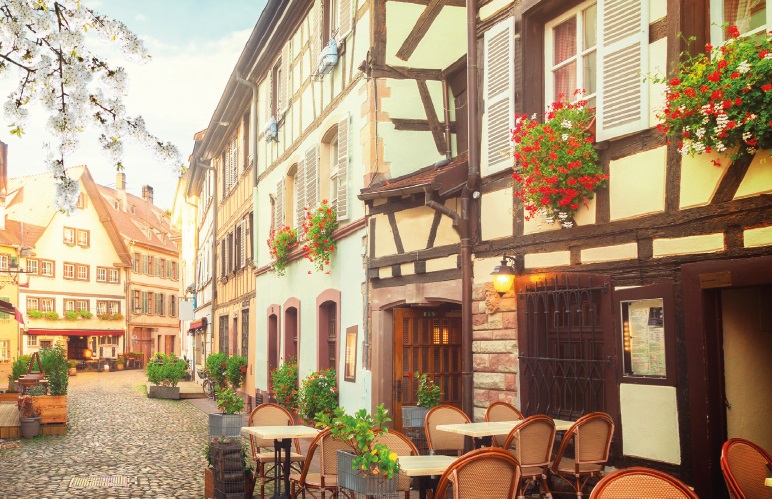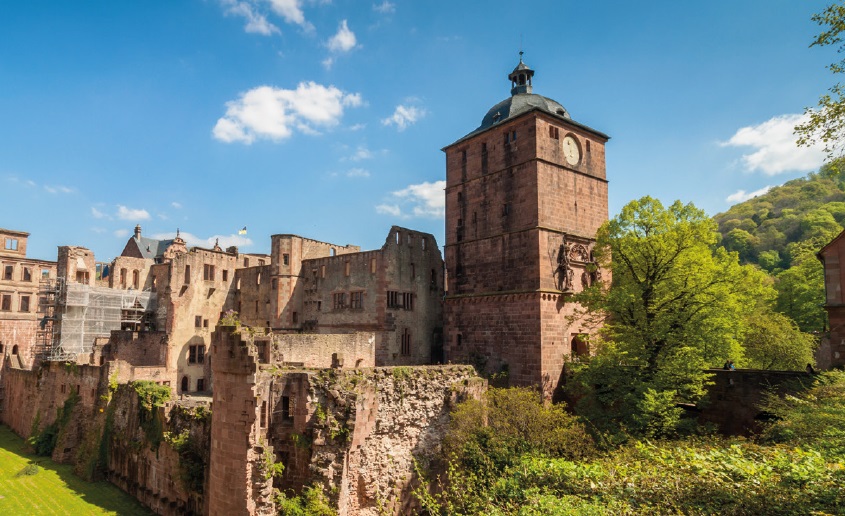
Cruising down the Rhine
It’s no wonder the Rhine is the most popular river for British holidaymakers. Ruined hilltop fortresses, lush vineyards and Black Forest gateau are just some of the attractions of a journey through Germany’s heartland. Past castles, vineyards and windmills, a Rhine voyage can carry you from the Netherlands to Switzerland, through a long slice of
It’s no wonder the Rhine is the most popular river for British holidaymakers. Ruined hilltop fortresses, lush vineyards and Black Forest gateau are just some of the attractions of a journey through Germany’s heartland.
Past castles, vineyards and windmills, a Rhine voyage can carry you from the Netherlands to Switzerland, through a long slice of Germany and along the French border.
With legendary sirens, ruined fortresses and the Black Forest, it is easy to feel you are in a fairy tale as you sail from Amsterdam to Basel, taking in cities such as Cologne, Koblenz and Strasbourg.
The central section is a fascinating selection of mainly ruined castles with names such as ‘Cat’, ‘Mouse’ and the ‘Hostile Brothers’.
Have your camera or binoculars handy as you stand on the deck of your ship peering at the passing battlements while your guide gives a running commentary on the colourful histories.
Staying in Amsterdam before the journey allows you to take in the city with its canals, notorious cafés and Anne Frank House.
Still in the Netherlands, Kinderdijk is a UN site of historic windmills and dykes, a typical Dutch landscape.
Once in Germany your ship will stop at Cologne, with its imposing cathedral – and the chance to go on an unusual pub crawl. At each inn you are served kölsch – just a fifth of a litre (around a third of a pint). As soon as one is finished, the waiter, carrying a tray of glasses, replaces it until you’ve had enough, keeping a tally on your beermat.
After the former West German capital of Bonn, you arrive in Koblenz, where the Rhine and Moselle meet at the ‘Deutsches Eck’, or ‘German corner’. As well as a statue of William I, there is a cable car near the imposing Ehrenbreitstein Fortress.
After the castles, the view changes to the vineyards of Rüdesheim and soon you’re in Mainz, from where you can take an excursion to Heidelberg on the Neckar, with its ruined fortress.

Strasbourg, as well as being the seat of the European Parliament, features a Gothic cathedral and La Petite France, a district with half-timbered houses, shops, bistros and a waterfront promenade. It is the capital of Alsace – caught in a tug- of-war between France and Germany over the centuries. If you get the chance, try some Flammkuchen, a kind of German pizza made of a thin bread covered with crème fraîche, onions and lardons.
The Black Forest is synonymous with gateau and cuckoo clocks and you can see both being made by going on an excursion. Some cruises offer an extension to Lucerne in Switzerland, with its lake, mountains and medieval covered footbridges spanning the river.
As Europe’s most popular river, with 39,000 Britons cruising on it last year, the Rhine is attracting more ships. Viking River Cruises celebrated 20 years of operation this year with the launch in March of Viking Hild and Viking Herja in Koblenz.
CroisiEurope is introducing the Douce France II, which will carry 135 passengers. Crystal Cruises is launching its second river ship, Crystal Bach, on the Rhine this year, along with Crystal Mahler, which will also sail the Main and Danube.
In 2018 it will follow this up with Crystal Debussy on the Rhine and Moselle, and Crystal Ravel taking in the Danube as well.
But if you want to clock up the rivers, a Saga trip on October 12 this year notches up six – the Saar, Moselle, Rhine, Main, Altmuhl and Danube.
DON’T MISS…
- The shrine of the three kings who are said to have visited the baby Jesus. The remains of the Magi are believed to lie within the large gold sarcophagus in Cologne Cathedral.
-

The ruins of Heidelberg Castle The giant wine barrel in Heidelberg castle. The ‘Great Heidelberg Tun’ can hold more than 200,000 litres. There’s even a dance floor built on the top of it.
- The Lorelei rock and the statue of the golden-haired temptress who, legend has it, lured sailors to their deaths.
- A Rüdesheimer coffee, fortified with brandy and topped with cream, in the town’s Drosselgasse, an alley where bars and restaurants jostle tightly together.
DID YOU KNOW?
Eau de Cologne, invented by Italian Johann Maria Farina, has been sold from the same shop in the city for 300 years.
THE RHINE TRIBUTARIES
Some cruises include tributaries of the Rhine such as the Main, Neckar, Moselle and Saar.
On the Main are Miltenberg, Wertheim, Würzburg and Bamberg before the canal which links the Rhine to the Danube.
Miltenberg is home to one of the oldest inns in Germany, the Zum Riesen, while Wertheim has medieval streets and a glass museum. Würzburg is at the centre of the wine country and a perfect place for tastings. If you’re still thirsty, Bamberg, with its seven hills and nine breweries, is known for its smoked beer.
Cochem is the pearl of the Moselle, with its 11th-century castle, while close to Heidelberg on the Neckar is Eberbach, with its famous monastery.
